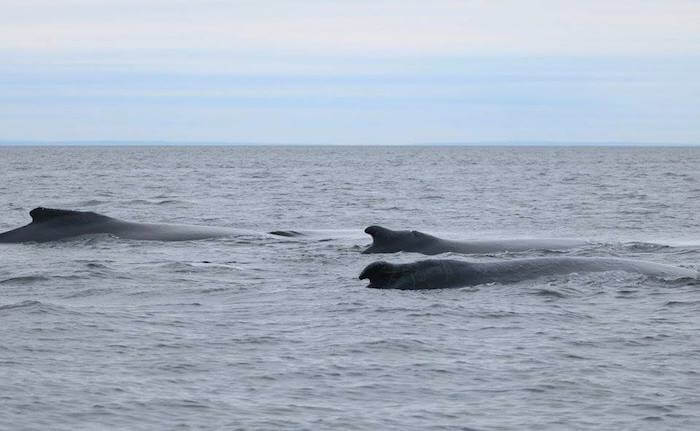When researchers placed a camera on the back of a humpback whale, they probably weren’t expecting an hour-long video during which absolutely nothing happens. Camera issues? Not at all! Instead, the researchers filmed what appears to be a period of rest for three completely submerged humpback whales.
That’s what Takashi Iwata of Kobe University’s Graduate School of Maritime Sciences (Japan) and his team explain in a recent study on sleep in humpback whales published in the journal Behavioural Processes. Thanks to advances in marine mammal observation tools, he was able to place a new type of omnidirectional video camera combined with a behavioural data recorder on the back of a humpback whale. This new device helped capture an activity that is usually difficult to observe: rest.
According to previous studies, cetaceans were believed to sleep predominantly at the water surface. A term was even coined for this resting behaviour: “logging”, in reference to an animal floating at the surface like a gigantic piece of driftwood. The observations in question indicate that humpbacks also sleep below the surface with an activity reduced to dives of a few metres followed by a slow ascent to the surface. An unprecedented observation for this species!
Filmed during their sleep
Since cetaceans send much of their lives offshore and under water, studies on their sleeping habits have mostly been carried out on captive animals. Other information comes from anecdotal observations or comparisons with other species. The use of a camera therefore provides yet another window into how baleen whales sleep. “Overall, our study shows that an omnidirectional video logger is a valuable tool for interpreting animal ecology with improved accuracy owing to its ability to record a wide field of view,” mention the researchers in their study.
Studying animals without human interference is already a gain for research. In this context, the observed behaviour is natural and not influenced by the presence of a researcher in the animals’ environment.
The tag equipped with a video logger enabled data collection for several parameters specific to humpbacks at rest. In addition to an hour-long video capturing the activities of three humpbacks off the coast of Vengsoya, Norway on January 26, 2016, the tag also recorded their inactive dives, gentle fin movements and swimming speed.
Rest comparable to that of other marine mammals
In the study, the drift dives of humpbacks were considered to be rest behaviour because they presented characteristics similar to those of other marine mammals observed by different researchers. These characteristics include little or no movement and slow swimming during the dive. Certain species of seals as well as sperm whales exhibit behaviours relatively similar to those observed by Takashi Iwata and his team. Seals swim along very slowly, practically drifting. Sperm whales can rest under water in a vertical position or horizontally when they are closer to the surface.
The team raises one possibility, suggesting that animals can adapt their rest behaviour as a function of sea conditions or their buoyancy, amongst other variables. Thus, it is possible that humpbacks are able to choose whether they want to sleep at or below the surface.
Promising camera technology
The omnidirectional camera has pushed the boundaries of humpback whale watching. Sleep is one of several behaviours that researchers can now study with a better understanding of the environmental factors influencing the activity of these cetaceans. Mating and foraging strategies could be better understood with this video-logging tag, which has little or no blind spots.
This device will help expand the frontiers of current knowledge on humpbacks and perhaps other marine mammals as well. In another video made with the same type of recorder, we can observe nursing being filmed for the first time from the calf’s perspective. This new research tool is therefore very useful for better understanding maternal behaviour in humpbacks. Thanks to such ingenious inventions, research groups are able to shed light on the reality of marine mammals. We will also potentially be able to better understand our impact on their marine habitats and the resources they require.






